Good Streaming Entertainment Deserves Great Ad Support
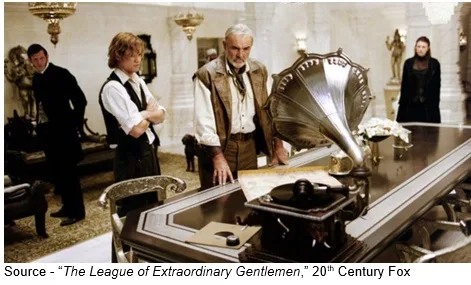
We should have known M&E folks were in for a rough time last year.
Early in the Spring the upfronts – where networks talk big spenders into getting theirs first – were basically cancelled because no one knew what (if any) shows were going to be ready for the fall season.
The Euro football championships were cancelled.
The Olympics were pushed to this year…maybe.
Then things got bad.
Networks were running on fumes, falling back on 5-10-year-old movies squeezed in between their 10+ minute blocks of “we’re all in this together” ads to remind us we were in lockdown.
Fortunately, Netflix, Disney, Amazon, Apple and a few other streamers around the globe gave consumers some viewing relief from the scarred social and economic landscape.
But it didn’t take folks many weeks of friendly home time to watch all the stuff they wanted to watch in their subscription services.
After that people quickly became expert OTT channel/web surfer looking for something fun, interesting to watch or do.

It turns out there are a number of really good ad-supported services that offer up some very good stuff for free.
Yes, you pay for them by watching the ads but it’s well worth the price.
The kids asked us about the free (pirate stuff) and we had to again explain:
- The potential for malware, personal data loss is very real
- Doing it feels like we’re taking money from content creators we know and that ain’t right
We’re partial to three US AVOD services (right now) – Pluto TV (Viacom), IMDbTV (Amazon) and Tubi (Fox).
Of course, our son says watching ad-supported stuff is too crass, so he plays a lot of “free” games – PC and mobile – to remain a purist.
We don’t bother telling him that there’s no such thing as a free lunch and that really good ads don’t interrupt what you’re watching/playing but just … register.
Unfortunately, too many ads fail because they’re focused on the advertiser, not the consumer.
That was tolerated before; but when the lockdown hit, the linear TV schedules got stale real fast.
Ads even faster.
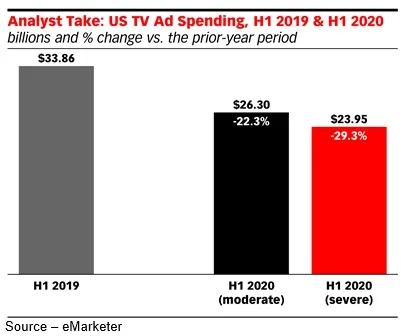
According to Nielsen and other ad reporting services, the minute the pandemic took ahold, most marketers froze because they couldn’t figure out what to do so, most did nothing.
Frankly, they didn’t look, think hard enough and missed a great opportunity to help folks move forward.
They stuck with the volume approach – repeat not-of-interest ads and ad bundles – missing the opportunity to personalize their reach/messages.
But it gave the under-the-radar AVOD services a chance to get established.

AVOD is huge in APAC, especially China and India where more than a billion people already watch ad-supported video services to exchange a little bit of their time to watch the TV shows, movies and sports.
Even Europeans discovered the benefits when they switched to personalized entertainment and personalized ads.
The US, the second largest streaming market behind China, still thinks the only way to escape linear TV is to pay a subscription or two or three or…
But now that they’re suffering from subscription fatigue, they’re slowly discovering that the free stuff isn’t so bad.
Yeah … it’s different and it’s personal.
And the ads can be personal too!

First of all, there are fewer ads with streaming AVOD than with the old Pay TV stuff – typically three minutes of ads per hour of content vs. up to 20 minutes of ads on traditional TV.
Second, rather than measuring ad viewership in millions of eyeballs, the ads are more targeted.
The service can target ads based on very precise personal and demographic information so you don’t have to be barraged with ads for ovarian cancer sufferers, ambulance chasing lawyers, or supplemental retirement insurance when you’re more interested in new running shoes or the next great tech toy.
And rather than the annoying YouTube preroll ad, the less intrusive ads appear in a more interesting/appropriate part of the TV show or movie.
With more data; the more appropriate ad, tailored to the viewer’s profile, effectively and efficiently
piques his/her interests.
Of course, that means marketers have to really know/understand their market and their customer base.
But when they do, beautiful things happen.

People see ads they’re interested in, in shows they’re interested in, on subjects they’re actually interested in, so they register instead of intruding.
Suddenly, the “new normal” is simpler, more efficient, more attractive for everyone concerned.
The marketer knows with a greater degree of confidence where her/his investment was made and more precisely who received the ad so, there’s greater assurance that the message was presented to the right potential viewer/customer.
The viewer had a show/movie they were interested in without paying a subscription free and OMG actually saw an ad that they were interested in.
For both the advertiser and the consumer it’s quality vs. quantity.
Giving people premium quality video content for free is a surprisingly economic way for advertisers to relevantly connect with a consumer/viewer.
Sure beats a social media or search engine ad following you around the web.
It is estimated that more than 50 percent of the people around the globe found an escape from isolation with streaming entertainment and the ad-supported services provide brands with an opportunity to not just connect with customers but to also validate they both will be successful after the pandemic.
The key is to develop/present ads that are funny, engaging or entertaining that connect/empathize with and support/build a relationship with people and their lives beyond the forced isolation.
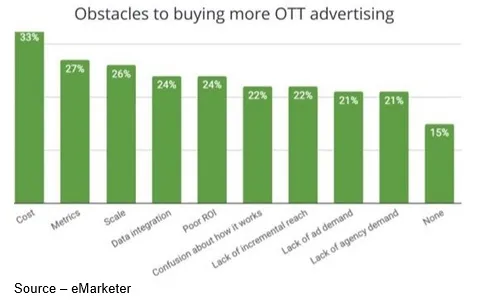
Because of the ability to more closely identify with, rather than intrude upon, the viewer combined with the economics, both Digital TV Research and Deloitte Global project AVOD ads will account for almost $32B in revenue this year and nearly $57B by 2024.
According to Digital TV Research, the AP region will contribute 14.41B and North America will suddenly wake up to a more effective, cost-efficient advertising approach that will rack up more than $14.2B while other regions will at least double their DTC investment.
A prime reason for the switch is the AVOD providers willingness to meet the viewers requirements because consumers consider an average of 3 to 8 minutes of advertising reasonable while old-fashioned networks feel 15-20 minutes of commercials per hour is acceptable.
“The dramatic reduction in ads vs. entertainment time hasn’t gone unnoticed by consumers who have become confused and overwhelmed by the rapid introduction of subscription services in the US,” Allan McLennan, PADEM Media Group CEO, commented. “People may not be able to tell you exactly how many minutes of ads vs. content they view – an ad load of less than 10 percent – but they appreciate the difference and pay closer attention to brands that support their entertainment.”
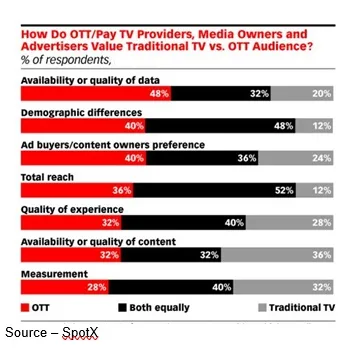
IP-based services just make it easier to deliver more addressable, contextualized advertising.
“These facts, combined with the global impact of the pandemic, have also forced marketers to rethink how they create and produce ads so that big budget ad productions may become the exception rather than the rule,” McLennan observed.
Another shift that has come about with the ad-supported streaming is that companies have also shortened their video spots and focused on a key message rather than an extended story.
Anthony Miyazaki, a professor and chair of the department of marketing and logistics at Florida International University’s College of Business, noted that the pandemic helped many marketers sharpen their creative thinking with short-form, stand-alone ads (six-second bumper ads) as well as reinforcement to 30-45 second ads.

Nielsen research found that bumper ads that focus on one product feature that engages the viewer can provide a 23 percent uplift with consumers compared to drawn-out ads.
Miyazaki pointed out that different and multiple bumper ads can add up to a larger, more impactful impression that is much more interesting and favorably recalled than the same 30-45 second ad viewed multiple times in the same show.
Audience research firms are finding that shorter ads, even 6-15 seconds, outperform longer video ads with greater ad recall and improved purchase intent (107 percent and 134 percent respectively) all at a much lower per-viewer cost.
“The challenge for marketing is to tailor content that is right for the platform and right for the audience, not marketing management,” McLennan stated. “That means connecting with the consumer in a positive, meaningful way rather than hitting the viewer with multiple features that aren’t of interest to the ultimate consumer/user.”
With consumers paring the number of subscription streaming services, the creative use of AVOD services and their programmatic buying provides companies and brands with a greater degree of flexibility and measurable advertising opportunities on the home or mobile screen.
During the period of being trapped at home and sharing screens with our kids, we also bumped into another marketing/advertising opportunity that is emerging under the radar – static and video ads in video games.
Our son recently dropped $20 for AMID EVIL from Steam that Mark Poppin recently covered in BabelTechReviews.
After playing it for 20+ hours over the course of a week, he probably got his money’s worth.
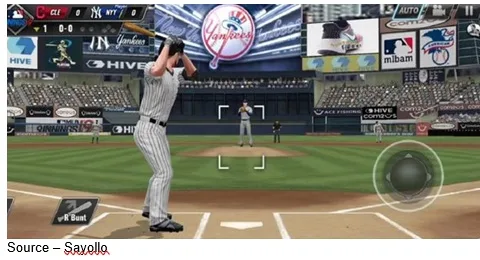
But what really interested us was the free streaming games he played on his smartphone. Unlike other ad-supported games he had, they didn’t look like sloppy afterthoughts.
Said differently, if you didn’t really like ads, you probably wouldn’t even think the spots were ads but rather a regular part of the game (that’s really the idea, you know).
It turns out a company named Sayollo inserts the ad into the game, so it looks natural.
We realize Sayollo’s approach isn’t totally unique, but it is the first in-game placement that looks natural rather some haphazard after thought that gets in between the player and the excitement.
Obviously, that’s pretty important for the millions of gamers around the globe who went back and forth between interacting with their entertainment and getting emotional over their entertainment.
It’s also important to the advertiser who only has one chance to make a good first impression.
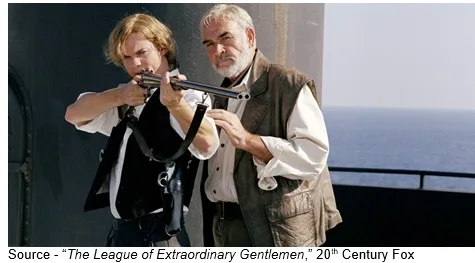 As for us, it’s all about free content and good ads and both are getting better … lots better.
As for us, it’s all about free content and good ads and both are getting better … lots better.
Now that we’re getting past our latest pandemic, we heard some of the seasoned creatives tell the new content creators what The League of Extraordinary Gentlemen’s Allan Quartermain said to Tom Sawyer, “May this new century be yours, son, as the old one was mine.”
# # #
Andy Marken – [email protected] – is an author of more than 700 articles on management, marketing, communications and industry trends in media & entertainment, as well as consumer electronics, software and applications. An internationally recognized marketing/communications consultant with a broad range of technical and industry expertise in storage, storage management and film/video production fields; he has an extended range of relationships with business, industry trade press, online media and industry analysts/consultants.